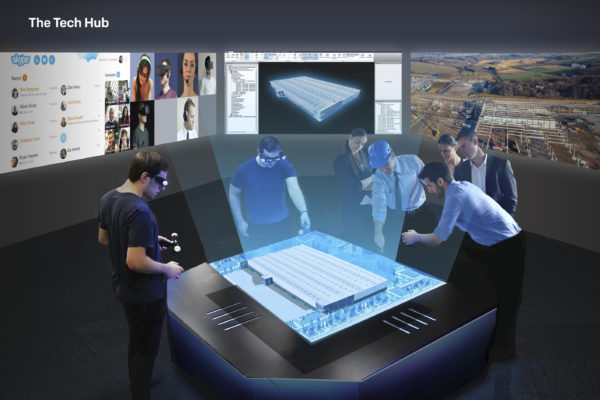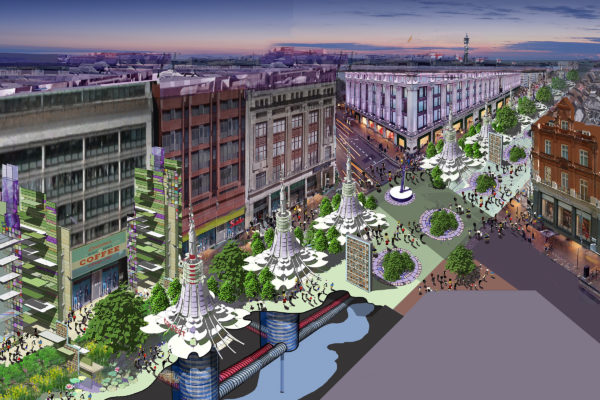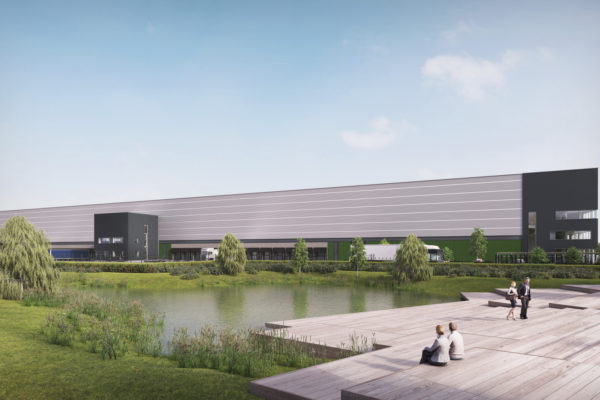Chetwoods Works has been conducting research to develop its understanding of how buildings can impact human wellness and health with the use of data centric approaches. Dr Erika Pärn a research associate at the University of Cambridge, who leads Chetwoods Works team, explores the potential application of Digital Twins to respond to future resilience needs of building design, specifically from events such as the Covid-19 pandemic.
The World Health Organization (WHO) has announced COVID-19 has hit over 200 countries/territories/areas outside China, with now over 500,000 confirmed cases (data as of 31st March 2020), far exceeding the anticipated spread from its epicentre in Wuhan, China. This has become a significant disruption on public and private operations within various industries like construction, hospitality, tourism, retail, transportation and manufacturing.
The immediate effects of the virus outbreak leave no one unaffected, from social distancing, closure of schools, museums, theatres and sports events, and more recently to full-blown city scale lockdowns, leaving people stranded in their homes for prolonged periods of time. If previously the general populous was spending 90% of their time indoors (from homes, cinemas to shopping), now amid the virus breakout nearly half of the world’s population are forced to spend nearly 99.9% of their time in a designated indoor location.
Spreading through people and our built environment
Experts agree that the virus can be spread airborne and from solid surfaces. A study by Doremalen et al., (2020), shows that the virus can survive in droplets for up to three hours after being coughed out into the air. Fine droplets between 1-5 micrometres in size – about 30 times smaller than the width of a human hair – can remain airborne for several hours in still air. Other researchers in the built environment also note that “whilst COVID-19’s primary means of spread is via contaminated surfaces, it is important to recognise the airborne aspects of its human-to-human transmission. This happens through pulmonary events like sneezing, coughing, singing and talking, as well as the physics behind how surfaces themselves get contaminated by such events.” A. Zulfikar
In a similar vein, our buildings’ physical spaces and rooms may also become contagious and require remote monitoring for risks. According to A. Zulfikar “infectious droplets from a person would remain in aerosolised form (i.e. vapours suspended in the air) for up to 10 minutes and in some cases for hours.”
How can digital twins affect a disaster response?
Remote sensing and satellite imagery are no longer sufficient as a reliable source for situational awareness about disruptions such as COVID-19 that affect communities at a local and global scale. Governments are facing unprecedented pressure to make faster sense of situational awareness regarding the outbreak.
Gartner speculates that the COVID-19 outbreak has increased the need for government transparency and improved decision making which is putting greater emphasis on data centricity. If governments are to make critical decisions about their national infrastructure and their citizens’ health, then the entire ecosystem of the built environment must be aligned with this data centric approach.
The increased use of data analytics and machine learning solutions when modelled at a city scale may be the solution to a more data centric disaster management. Specifically, the city scale digital twin is an emerging area of interest for integrating data analytics to increase transparency of citizen–technology–built environment interactions. Thus, suffice to say the governmental demand for national city scale digital twins will only increase following the ramifications of COVID-19 outbreak.
Why will digital twinning become an increasingly important agenda item for preparedness for pandemics?

In the context of pandemics and disaster management, city digital twins compile and analyze data with the goal of improving situational awareness and decision making. Digital twins have become increasingly popular in an industrialized manufacturing setting. Yet, digital twins at a city scale can have a far further reaching impact on people than in manufacturing, particularly for government agencies analysing in real-time what can be done to be more resilient in the face of pandemics.
A digital twin is enabled by three key elements: computing capability for analytics, sensors for monitoring, and visualisation for simulations. Monitoring is the task in which a digital twin collects real-time situational data to track human and the built environment systems and their interactions. Analytics components of a digital twin have the inherent potential to uncover patterns, trends and associations related to design data, human behaviour, and the interactions between the two, for improved decision making. Probabilistic simulation enables scenario planning and risk prediction for instance related to COVID-19 spread.
A digital twin can be of different levels of scale with respect to size and scope. Size is the level of detail of the digital representation (how accurate it is), and scope is how much of the real-world that model is representing (i.e. an HVAC system, building or an entire city). Digital twins in the built environment can range from basic to complex. In the case of pandemics, exemplars of built environment digital twins can broadly be organised into five types:
- Component – informing at a granular level what type of air filters, fans, dampers and grilles are in place in order to determine the risk of spreading the virus. Some HVAC systems designs may recirculate infectious aerosols from one space/room to another.
- Asset – knowing what HVAC system is in place to determine the risk level to the occupants of that building depending on its typology (i.e. hospital, office, hotel, residential tower block).
- Process – understanding the occupant behaviours or processes to determine the likelihood of spread in a single building, a complex of residential buildings or the entire neighbourhood.
- System – insight into the complex of interrelated buildings (i.e. hospital or residential) that occupants interact between.
- Network of systems – oversight of a city scale digital twin consisting of the built environment.
What role do architects play?
The current outbreak has exposed the quintessential need for transparency between the institutions that are meant to advise architects and the inherent connection between the health and wellbeing of occupants and the physical and spatial spaces they occupy.
The data centric approach has made advances in new mathematics, material science, computational methods all the way through to new business processes and models for engineering companies across all sectors. The exception is in the Built Environment – and architecture specifically – where such data centric approaches have remained limited.
Yet, architects play a vital role in the creation of design data used in future digital twins. Early consensus has been reached that digital twin design data heavily influences businesses’ capability to make intelligent decisions and predictions. Digital design work by architects and engineers will form the basis of any future digital twin capabilities.
Chetwoods Studio, Thrive and Works strategy is taking this concept and seeking to develop further its understanding of how buildings can impact human wellness and health with the use of data centric approaches.

We are developing our understanding of how to help quantify health metrics (using the WELL Buildings Standard) in our design tools and eventually the digital representations of our designs. This could make the difference at a governance level when making decisions about our national critical infrastructure and the response to pandemics.
This pandemic is set to alter the course of many lives and many practices. We will seek to determine how to alter our design processes to ensure that health related metrics are available throughout the lifecycle of a building and better inform future digital twins in our designs. Design of space often shapes occupant behaviours and vice a versa. Understanding occupant behaviours and the impact of design could help improve oversight of situational awareness during pandemics, particularly in highly urbanised and densely populated areas.
The Well-line
Chetwoods are also reviewing what logistics infrastructure can learn from the current situation. In particular we are looking at how the Well-line – our proposal to create a new congestion and pollution reducing fast cross-city logistics route via existing underground tunnels under central London – could be repurposed in emergencies for medical and data transportation, waste removal and energy generation.

Dr. Erika A. Pärn [PhD, BSc (Hons), PgCE, PgCR] / Chetwoods Works April 2020
To be the first to receive our latest research, industry articles, event invitations or news updates, please provide your details below to subscribe. You can unsubscribe at any time.




